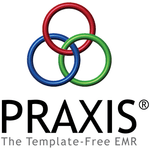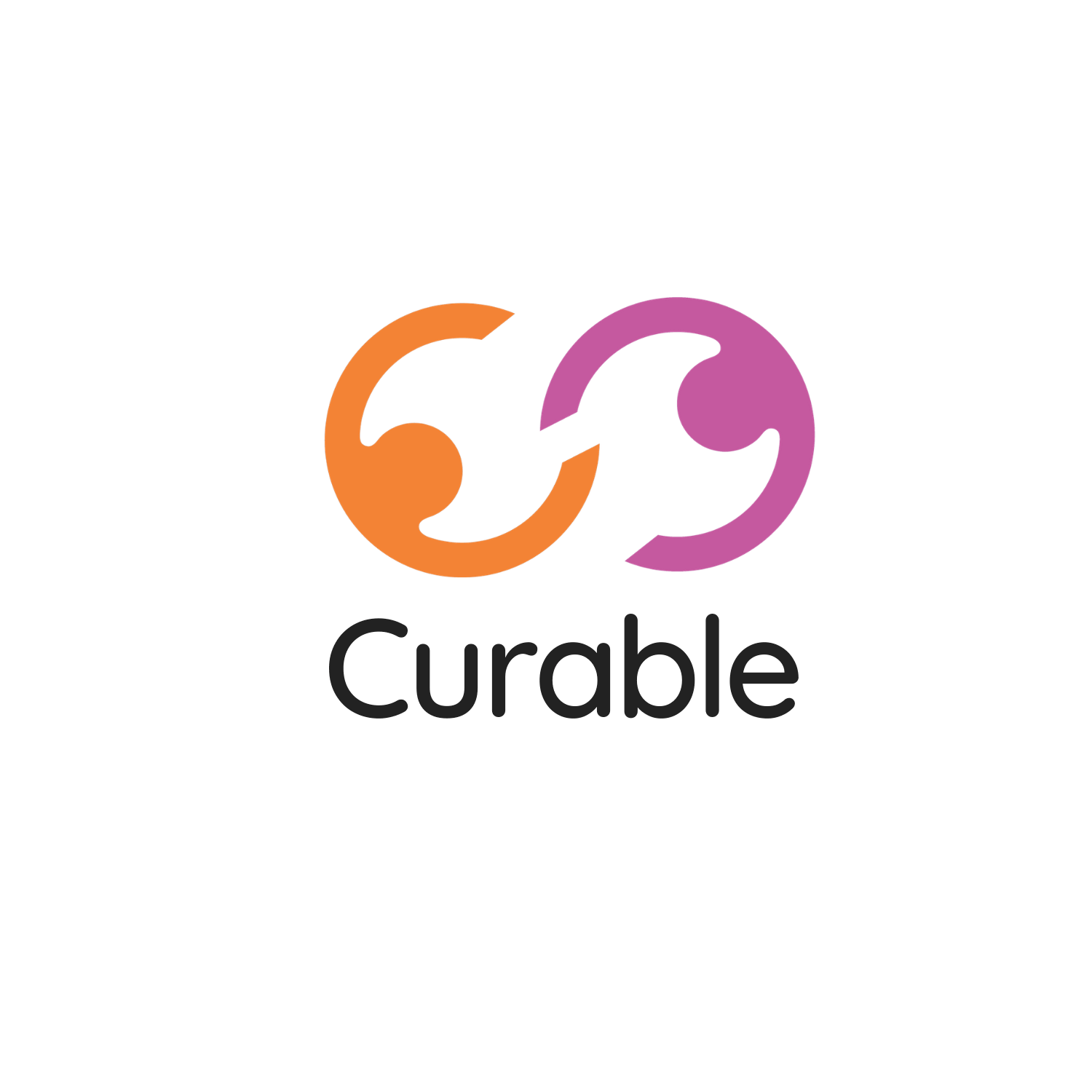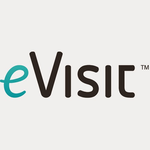What Is Telemedicine Software?
Telemedicine software is a technical solution that allows healthcare providers to interact with patients remotely and deliver medical services via virtual consultations. It enables doctors and patients to communicate securely while also exchanging critical medical data such as patient history and diagnostic images. This program is compatible with a wide range of electronic devices, including PCs, cellphones, and tablets, giving clinicians and patients greater flexibility and convenience.
Telemedicine software includes a variety of capabilities, such as secure video conferencing, remote monitoring, appointment scheduling, and electronic prescription. It also enables real-time communication between doctors and patients, allowing for more effective diagnosis and treatment without requiring in-person visits. This software can be connected with electronic health records, allowing doctors to better access patient data and make accurate diagnoses and treatment recommendations.
One of the key advantages of telemedicine software is its ability to improve access to healthcare for patients in rural places or with limited mobility. It also eliminates the need for patients to physically travel to a medical center, saving both time and money. Furthermore, telemedicine software can help healthcare providers expedite their workflow, allowing them to visit more patients while improving overall patient satisfaction.
Before selecting telemedicine software, it is critical to examine several considerations. These include the software's interoperability with existing technology, usability, security features, and cost. Additionally, it is critical to ensure that the software complies with healthcare rules and regulations in order to preserve patient information and data privacy.
What Are The Recent Trends In Telemedicine Software?
The use of telemedicine software has increased dramatically in recent years. The global telemedicine industry is predicted to reach $185.66 billion by 2026, with a 23% compound annual growth rate (CAGR). The increase in demand for telemedicine services is being driven by a variety of causes, including rising healthcare expenses, technological improvements, and the need for more accessible and convenient healthcare solutions.
One significant trend in telemedicine software is the incorporation of artificial intelligence (AI) and machine learning (ML) capabilities. These technologies enable the analysis of huge amounts of patient data, resulting in more accurate diagnoses and treatment strategies. AI-powered chatbots and virtual assistants are also being utilized to speed up the patient intake process and help schedule appointments.
Another trend is the introduction of virtual and augmented reality (VR/AR) technology into telemedicine applications. This enables fully immersive virtual consultations, remote medical training, and even virtual surgery. With the rise of remote patient monitoring, VR and AR technologies are being used to give real-time monitoring of patient vitals, allowing healthcare providers to intervene as needed.
Furthermore, there has been a trend toward mobile-based telemedicine options. With the increased usage of smartphones and tablets, people can now receive healthcare services from the comfort of their own homes. This has also led to the creation of telemedicine apps, which make it easier for patients to communicate with healthcare providers.In addition to these technological changes, there has been an increased emphasis on ensuring HIPAA compliance in telemedicine software.
With the rising usage of electronic health data and telehealth platforms, it is critical to maintain patient privacy and security. As a result, telemedicine software suppliers are introducing stringent security measures to safeguard patient data. Finally, there is an increasing need for compatibility in telemedicine software. As healthcare systems continue to integrate different software systems, interoperability facilitates seamless communication and data sharing across platforms. This is critical for providing efficient and excellent care to patients.
Benefits Of Using Telemedicine Software
Telemedicine software is an innovative technology that allows healthcare providers to expand their services beyond traditional brick-and-mortar locations. Telemedicine software allows healthcare providers to communicate with their patients remotely via video conferencing, virtual consultations, secure texting, and other tools. But what are the advantages of adopting telemedicine software for buyers? Let's have a closer look.
1. Improved Access To Healthcare: One of the most major advantages of adopting telemedicine software is greater access to healthcare services. In today's fast-paced world, patients are not always able to attend a doctor's office for a non-urgent issue. Telemedicine software enables patients to consult with their doctors from the comfort of their own homes, improving access to healthcare services.
2. Convenient And Time-Saving: Telemedicine software eliminates the need for patients to miss work or school for a doctor's visit. They can plan virtual consultations at times that are convenient for them. This saves patients time while also improving the efficiency of healthcare providers' schedules.
3. Cost-Effective: Telemedicine software lowers the total cost of healthcare for patients. Telemedicine allows patients to avoid travel expenses, reduce the number of visits to doctors' offices, and lower their health insurance premiums. Telemedicine software can assist healthcare providers save overhead expenditures including rent, utilities, and office supplies.
4. Improved Patient Engagement: Telemedicine software enables more frequent and convenient communication between patients and healthcare providers. This leads to increased patient involvement, as patients are more likely to stick to treatment programs and drug regimes when they have regular communication with their clinicians.
5. Remote Monitoring And Management: Telemedicine software allows for remote monitoring of patients' health state, particularly for those with chronic diseases. Doctors may monitor their patients' vital signs and symptoms via connected devices, providing timely interventions and avoiding unnecessary emergency department visits.
6. Facilitates Healthcare In Remote Locations: Telemedicine software can be a game changer for patients living in remote or rural locations with restricted access to healthcare services. It enables patients to receive specialist medical care that may not be available in their immediate location.
7. Increased Privacy And Security: Telemedicine software frequently has built-in security features to secure patient data. It provides the secure transmission of medical information, giving patients piece of mind regarding their personal health information.
Important Factors To Consider While Purchasing Telemedicine Software?
When selecting telemedicine software, several critical elements should be carefully considered to guarantee you make the best option for your firm. These factors include:
1. Integration Capabilities: When selecting telemedicine software, ensure that it integrates seamlessly with your existing systems, including as electronic health records (EHR) and practice management software. This will save time and lower the likelihood of mistakes.
2. HIPAA Compliance: Because telemedicine requires the communication of sensitive patient information, it is critical to select software that is fully compatible with HIPAA rules. This ensures that your patients' data is safe and secure.
3. User-Friendly Interface: Both healthcare providers and patients should be able to utilize the program easily. This will enhance the entire telemedicine experience and increase efficiency.
4. Customization Options: Each healthcare institution has distinct requirements, and the telemedicine software should be adaptable to match those demands. This could add elements like branding, bespoke forms, and patient workflows.
5. Mobile Compatibility: With the growing popularity of smartphones and tablets, it is critical to select telemedicine software that is compatible with mobile devices. This will make it easier for patients to get virtual visits and give doctors more flexibility when conducting consultations.
6. Technical Assistance And Training: Implementing new software can be difficult, therefore it is critical to select a supplier who provides technical support and training for both initial setup and continuous use of the product.
7. Security And Encryption: The software should include strong security features and encryption mechanisms to safeguard patient data from cyber threats.
8. Scalability: As your telemedicine practice grows, the software should be able to handle increased patient volume and new features without causing disruptions or incurring additional costs.
9. Pricing And Payment Options: Consider the software's cost, including any one-time setup fees or ongoing monthly expenses. Also, check to see if the software has alternative payment choices, such as pay-per-use or subscription.
10. Provider And Patient Satisfaction: Finally, it is always a good idea to read reviews and solicit feedback from other healthcare providers and patients who have utilized telehealth software. This can help you understand their experience with the product and make an informed selection.
What Are The Key Features To Look For In Telemedicine Software?
Telemedicine software, also known as telehealth software, has gained popularity in recent years as a comfortable and cost-effective method of providing medical care remotely. With the increased demand for telemedicine services, there are currently numerous software alternatives available on the market. However, not all telemedicine software is made equal, and buyers must grasp the important aspects that set a software solution apart.
Let's explore, we'll go over the most important features to look for in telemedicine software to ensure a seamless and successful telehealth experience for both doctors and patients.
1. HIPAA Compliance: One of the most important factors to consider while selecting telemedicine software is HIPAA compliance. The Health Insurance Portability and Accountability Act (HIPAA) establishes criteria for securing sensitive patient data, and any telemedicine software must meet these requirements to preserve patient privacy and security. Look for software that has undergone an independent security audit and has been verified to comply with HIPAA rules.
2. User-Friendly Interface: A user-friendly interface is essential for both healthcare providers and patients to utilize the telehealth platform effectively. The software should be straightforward, well-designed, and simple to use, even for those who are not technically sophisticated. A cluttered and confusing interface might impede successful telehealth uptake and reduce the overall user experience.
3. Video And Audio Quality: Because telemedicine relies primarily on virtual communication, video and audio quality are important considerations. The software should offer high-definition video and clear audio to allow for real-time contact between healthcare personnel and patients. Poor video and audio quality can impede the capacity to appropriately diagnose and treat patients, effectively negating the objective of telemedicine.
4. Appointment Scheduling And Management: Telemedicine software requires efficient appointment scheduling and management to assist healthcare providers in staying organized and managing their workload effectively. Look for software that enables physicians to plan, reschedule, and cancel appointments in real time, send automatic patient reminders, and sync with their existing calendars.
5. Electronic Prescriptions And Health Records: A reliable telemedicine program should allow you to securely deliver electronic prescriptions and view patient health records. This functionality not only simplifies the prescription procedure, but also enables efficient and precise communication between clinicians and patients, resulting in better outcomes.
6. Virtual Waiting Room: Just as in a typical healthcare setting, telemedicine software need a virtual waiting room to manage patients who are waiting for appointments. This function ensures that patients are seen in order and shortens wait times. Look for a software solution that includes a virtual waiting room to improve the patient experience and the workflow of physicians.
7. Mobile Compatibility: With the proliferation of smartphones and tablets, the ability to access telemedicine services on the go is more crucial than ever. Look for software that works with both iOS and Android devices, allowing patients and clinicians to connect from any location, at any time.
Why Do Businesses Need Telemedicine Software?
Telemedicine software has evolved as an important business tool in today's fast-paced and technologically driven society. This revolutionary technology enables healthcare providers to communicate with patients remotely, increasing access to medical care and improving the entire patient experience. But why do businesses require telemedicine software? Here are several main reasons:
1. Increase Efficiency And Productivity: Telemedicine software simplifies communication between healthcare providers and patients. Virtual consultations and remote monitoring allow healthcare providers to see more patients in less time, enhancing their efficiency and productivity.
2. Cost Savings: Telemedicine software reduces the need for real office space, lowering overhead costs for organizations. It also decreases patient travel expenses and can result in fewer missed visits, saving both physicians and patients time and money.
3. Increase Service Reach: Telemedicine software enables businesses to reach patients in remote or underdeveloped locations, broadening their service offerings and entering new markets. This enables providers to expand their patient base and income opportunities.
4. Improved Patient Engagement: Telemedicine software allows businesses to communicate with patients using secure messaging, video consultations, and remote monitoring. This not only increases patient pleasure, but it also encourages increased patient involvement in their healthcare experience.
5. Real-Time Data And Analytics: Telemedicine software collects real-time data and generates analytics, giving organizations important insights into patient health trends and care outcomes. This information can help clinicians make more educated decisions and improve the quality of care they give.
6. Compliance And Security: Telemedicine software guarantees that laws and regulations, including as HIPAA, are followed, while also securing patient data and ensuring anonymity. This helps firms create trust with their customers and retain a positive reputation.
How Much Time Is Required To Implement Telemedicine Software?
The implementation time for telemedicine software varies based on a number of factors, including the product's complexity, the size of the company, and the level of customization necessary. In general, the usual implementation timeline varies from a few weeks to several months. First, analyze the type of telemedicine software being used.
There are several types of telemedicine software available, each with a different set of features and functionalities. Basic telemedicine software may be more quickly implemented than comprehensive platforms with extensive functionality. Second, the size of the organization influences implementation time. Smaller firms with fewer users and simpler workflows may experience a faster adoption process than larger organizations with more complicated workflows and a larger user base.
Third, the level of customization required can influence the implementation timeline. Off-the-shelf telemedicine software may have a faster implementation time than customized solutions that involve development and integration with current systems. It is also worth noting that the organization's preparation can have an impact on the implementation period.
The effectiveness of telemedicine software implementation is strongly dependent on the readiness of the organization's infrastructure and workforce. Organizations with well-established routines and systems may find that the implementation process goes more smoothly and quickly. Additionally, the training and onboarding processes can have an impact on implementation time. It is critical that the business give sufficient training and onboarding for all staff members to ensure that they are comfortable and proficient in utilizing the telemedicine software.
What Is The Level Of Customization Available In Telemedicine Software?
When it comes to telemedicine software, one of the most important factors to consider is the extent of customisation. This refers to the capacity to adapt and personalize software to meet the unique demands and requirements of a healthcare organization or individual healthcare professionals. Overall, telemedicine software provides a great level of customization, allowing users to adjust the platform to their individual requirements.
This may include branding and logo customisation, color and design customization, as well as adjustable appointment scheduling and patient communication options. The level of customization available may also vary depending on the software you use. Some telemedicine software, for example, may have a more standardized interface and capabilities, but others may provide a wide range of customization choices to fit different healthcare specialties and processes.
Before deciding on telemedicine software, you should analyze your individual requirements and the extent of customisation needed. Some important considerations are the ability to interact with your existing systems, HIPAA compliance, and support for multi-device use. Another crucial factor to consider is the quality of support and assistance offered by the software provider for customization.
If you lack the technical skills to configure the program yourself, you must find a vendor who provides dependable support and modification assistance. Overall, telemedicine software provides a great degree of customization to match the specific requirements of healthcare institutions and experts. It is critical to thoroughly consider your needs and select software that provides the essential customization possibilities to improve your telemedicine operation.
Which Industries Can Benefit The Most From Telemedicine Software?
Telemedicine software has transformed the healthcare business by enabling remote access to medical care via a variety of technological instruments. This new program enables patients to consult with healthcare professionals electronically, decreasing the need for in-person appointments while also facilitating convenient and effective communication between doctors and patients. While telemedicine software has demonstrated considerable benefits for the healthcare industry, its benefits go beyond medical procedures. Several other sectors can use this technology to improve their operations and services.
1. Healthcare Industry: The healthcare industry is clearly the most likely to gain from telemedicine software. This program enables medical providers to contact a larger patient population, particularly those in remote or rural areas where access to quality healthcare services is limited. Telemedicine software allows doctors to electronically confer with patients, diagnose medical issues, and even prescribe drugs, eliminating the need for in-person visits and boosting overall patient happiness.
2. Corporate Sector: Telemedicine software can be extremely beneficial for businesses and organizations. It enables employers to provide easy and accessible healthcare services to their employees, saving time and money on traditional medical consultations. Companies that use telemedicine software can promote a healthy workforce, resulting in higher productivity and fewer employee absences.
3. Insurance Businesses: Telemedicine software can help insurance businesses streamline their operations and lower costs. With this software, insurance companies can include virtual consultations in their insurance coverage, allowing consumers to receive medical care without incurring additional costs. This also promotes timely and proactive healthcare, which may reduce the need for costly treatments and hospital visits.
4. Government Sector: Telemedicine software can help the government provide healthcare services in remote and rural places. Governments can use this technology in healthcare programs to provide remote medical consultations and reach out to underserved communities with limited access to excellent medical services.
5. Education Sector: As virtual learning becomes more popular as a result of the growing pandemic, telemedicine software has the potential to play a big role in education. It allows schools and colleges to provide virtual, remote consultations with school nurses and psychologists, safeguarding students' well-being and health while reducing the risk of sickness exposure.
Conclusion
Finally, investing in telemedicine software can benefit both healthcare providers and patients by making access to healthcare services more simple and efficient. Telemedicine software has become a crucial tool for healthcare companies as technology has advanced and there is a rising demand for virtual healthcare. When considering acquiring telemedicine software, it is critical to carefully compare the features and capabilities provided by various manufacturers.
To preserve patient confidentiality, use a user-friendly platform that includes secure communication and data encryption. Additionally, ensure that the software connects easily with your current electronic medical records system and includes comprehensive telehealth capabilities such as video conferencing and remote patient monitoring.
Consider the software's scalability and whether it can expand with your firm while also adapting to future technological advances. Pricing and customer support alternatives should also be considered. It is also critical to include key stakeholders in the decision-making process to ensure that the software satisfies the needs and requirements of every user.
A comprehensive training program should be implemented to facilitate a smooth transition and adoption of the software. Overall, telemedicine software can significantly improve the delivery of healthcare services and patient outcomes. So, carefully consider your options and select a dependable and complete solution that addresses your organization's specific requirements. With the appropriate telemedicine software, you can provide excellent virtual treatment while remaining competitive in the ever-changing healthcare sector.






















